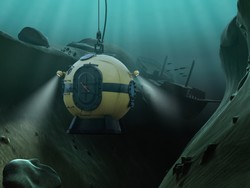Hidden life of deep subsurface archaea revealed
Archaea are prokaryote organisms found in ecosystems across the globe that mediate important processes controlling greenhouse gases and nutrients. They also possess a unique ability to deal with extreme energy starvation. To date, no representatives of archaea living in deep ocean sediments have been successfully cultured in the laboratory. The DARCLIFE (Deep subsurface archaea: Carbon cycle, life strategies, and role in sedimentary ecosystems) project was established to study these poorly understood benthic microorganisms. Scientists aimed to explain their role in sedimentary ecosystems and carbon cycling, and to explore their strategies for dealing with extreme energy limitation. Central to this research was information contained in the structural and isotropic properties of membrane lipids from benthic archaea. These lipids encode information related to both the taxonomy of their microbial producers and their adaptation to their habitats. They also serve as proxies for live cells in natural environments. Expeditions were made to the western and eastern Mediterranean, the Sea of Marmara and the Black Sea to collect sediment samples and conduct an in-depth geochemical examination of the archaea's benthic habitat. Researchers also conducted field work at an estuarine site in North Carolina, United States. A new generation of protocols based on metagenomics analysis were also developed to provide a phylogenetic framework and further insights into archaea metabolism. This allowed researchers to routinely monitor up to 1 000 compounds in sediments and environmental samples, thereby obtaining a more complete view of microbial communities. The result was the discovery of several novel archaea lipids that had not been described in cultures before but appear to be characteristic of benthic archaea. These have been tentatively linked to members of the Miscellaneous Crenarchaeotal Group. Researchers cultured relevant model species of archaea to gain a better understanding of how archaea adapt to energy stress and its associated effects. Results with Nitrosopumilus maritimus and Methanothermobacter thermautotrophicus supported the hypothesis that the strong predominance of archaeal glycolipids over phospholipids generally observed in the subseafloor resulted from an adaptive response to severe energy stress. DARCLIFE explored the fundamental properties of life at minimal energy. Its frontier research has provided a clearer understanding of the role of archaea in the Earth system.







